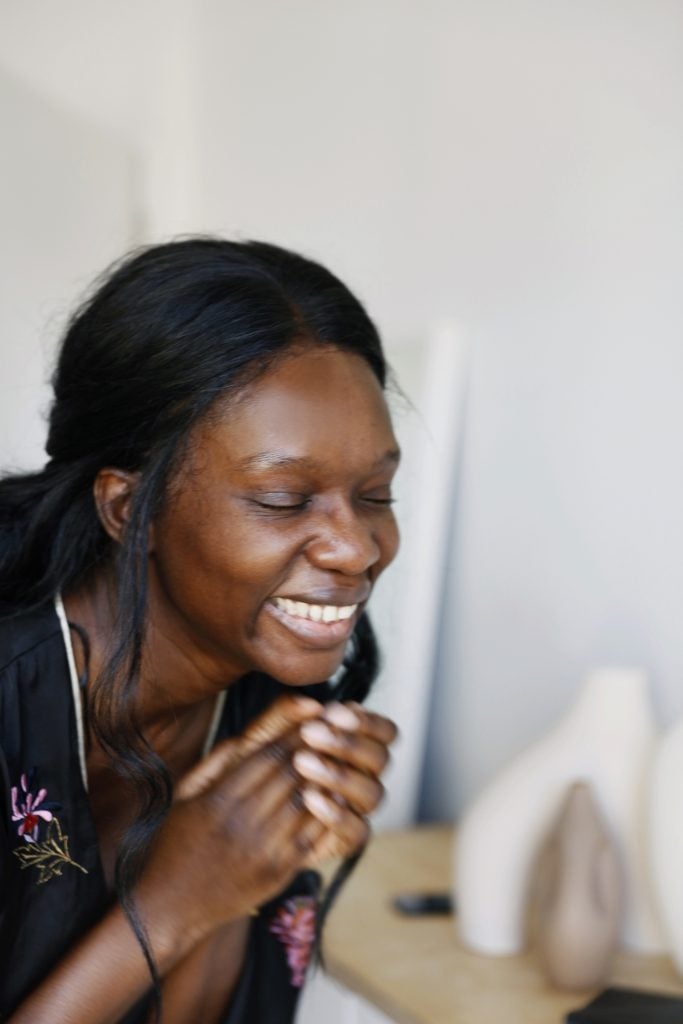As a self-employed woman, I live on the adrenaline rush of opportunity. The combination of what’s next and what can be in my work fuels my days. I mean, it must. Undoubtedly, having an abundance mindset is requisite for moving forward, especially when you feel like a lone rafter charging against white rapids. But those waters can become insurmountable, at times. The crush of reality’s headlines, from massive job layoffs to talks of a looming recession, darkens my optimism. Sadly, I know I’m not alone. We are living through fear-inducing times, Amina AlTai tells me. “This moment has many of us questioning our job security and economic safety.”
A sought-after career and leadership coach, AlTai has seen countless people operate from a place of fear (or scarcity, as she refers to it), especially during these tough times. However, there is a way through, she says. We can move forward with enthusiasm and power—even if the forces are grim—and nourish an abundance mindset. It’s not woo-woo, nor is it lofty. As AlTai fills me in here, having an abundance mindset begins with employing some mental tools, all of which are free. Plus, it requires the knowledge that no matter what, there is always more—and there is always enough. Let’s dive in.
Feature image by Lindsay King Photography.


What is an abundance mindset?
An abundance mindset is knowing there is more than enough out there for you. Basically it’s about acknowledging abundance and knowing you’re worthy of it—and allowing yourself to see and go after all that’s possible.
Why is it so powerful?
The reason an abundance mindset is so powerful is that our beliefs govern our ideas, which then guide our actions and produce our experiences, explains AlTai. Additionally, we have something called confirmation bias, a tendency to look for things in the external world that confirms our beliefs.
“When we’re in fear-based thinking we often approach situations from a place of scarcity,” adds AlTai. “Our first thought is usually that there isn’t enough. So, if we believe that there isn’t enough, it will be reinforced externally.”
Contrarily, when we shift this perspective to one that is of abundance or more than enough, that too will be reinforced in our lives. And this is positive! “That’s why our beliefs are so important—because what is planted there will be reinforced through our experiences.”


How to Create Abundance
Like any practice, an abundance mindset is personal. We all carry limiting beliefs and storied histories that inform our perspective today. To begin on the journey toward abundance, AlTai invites us to first think: I CAN thrive and have what I want, even in the face of challenge.
Next, she suggests a tool called fear-sorting. “This is one of the most helpful methods I use with clients in challenging times,” she says. “Basically, it allows us to get abundantly clear on our fears and then sort through them to understand what might be a cognitive distortion and what is an actual threat we need to prevent from happening.”
How to Fear-Sort in 6 Steps:
#1: Ask yourself, What am I afraid of right now? Jot down all the reasons you feel those fears today. “Don’t leave anything off the page,” says AlTai. “This is your space to put it all out there without judgment.”
#2: Check to see where you might be using mental filters—our unique way of processing information based on our own experiences. “We are living in a scary time and these fears are very valid—all feelings are valid,” stresses AlTai. “We just want to see if we might be over-rotating into distortion.”
Common mental filters include:
- Catastrophizing: assuming the worst outcome.
- Overgeneralizing: believing that because something happened once, it will happen again.
- Superstition: the tendency to think something bad might happen if we make a choice or move.


#3: Identify your fears and how likely they are to occur. Ask yourself, is there a low, medium, or high chance of this fear happening? “This helps us see what is real and what is false evidence,” says AlTai.
#4: Look at the fears that have a higher likelihood of materializing and see how you can prevent them from materializing. How can you mitigate its impact or have a backup plan for the worst-case scenario?
#5: Support your mental safety and well-being. “When we are fearful, we tend to let our mind run away with stories,” says AlTai. “We can stay out of our stories by having integrity in our actions.”
#6: List your strengths. Jot down where you are most courageous, inviting your brain to see and believe in your resilience and fortitude. “Tough times can make us feel powerless,” believes AlTai. “This exercise serves as a reminder that even in the most difficult moments, you are capable.”


How to Sustain an Abundance Mindset
AlTai shows us that it is possible—and accessible—to shift and expand our perspective. But even when we land on an abundance mindset, we must actively work to hold it. To do so, she recommends the following:
A Dedicated Daily Practice
“This could be a journaling exercise to ensure we are addressing our mindset and the actions we’re taking out in the world,” says AlTai.
The Fortitude to Keep Inquiring Within
Indeed, this is one of the most powerful things we can do for ourselves. AlTai suggests asking ourselves:
- What am I afraid of right now?
- Where do I feel contracted?
- How can I find evidence to the contrary?
- What can I do today to move toward growth?
- And ultimately: What actions can I take today to feel more abundant?
Looking for more ways to weave an abundance mindset into your daily life? Let Camille’s morning routine help you get grounded and carve out space for more inspiration throughout the day.






